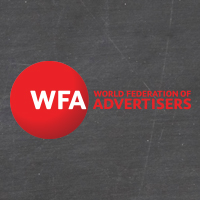There will always be brands of intrinsic appeal, interest and value to kids. And so there should be. Imagine how colourless childhood would be without them?
We may not always agree how these products are marketed. For instance, we’ve seen how food marketers have listened to parents and regulators and voluntarily limited the marketing of certain foods to children. But I think we all agree that if a product is safe, ethical and legal, then it can form a part of a child’s life to the extent to which their parents feel comfortable.
We all know how the media world is changing. New technologies mean children are interacting with media in a way which is totally alien to kids just a generation ago. Children are exposed to lots of different brand communications on an increasingly large number of channels for products sometimes designed for them but more often for adults.
We don’t live in a world (thank God) where we segregate adults from children, a point that was made compellingly in an article recently published in the Guardian. So efforts to ring-fence children and ban all marketing to them are unlikely to succeed. And this is the point. In today’s fast-changing, media-filled world, is it practical, desirable even, to wrap children in cotton wool and pretend that the commercial world doesn’t exist? When more traffic poured onto our roads, we didn’t ban cars. We taught kids how to cross the road.
Many forward-thinking companies understand that it is enlightened self-interest to fund media literacy to children. They understand that it helps legitimise their long-term license to develop products and communicate them in this new environment.
 Media Smart was launched in 2002 in UK to help give children aged 6-11 years the skills to better understand and deconstruct advertising. It has since been rolled out to eight other European countries and over 4 million children have now been taught using the materials (materials, incidentally, which have been developed by some of the finest independent media literacy experts worldwide, not of course by industry).
Media Smart was launched in 2002 in UK to help give children aged 6-11 years the skills to better understand and deconstruct advertising. It has since been rolled out to eight other European countries and over 4 million children have now been taught using the materials (materials, incidentally, which have been developed by some of the finest independent media literacy experts worldwide, not of course by industry).
“Media Smart so obviously, so patently gets it,” says the UK independent broadcast regulator. “It understands that’s the challenge of the future. It appeals to children clearly. It appeals to teachers equally clearly”
So much so that the UK Equalities Minister, Lynne Featherstone has recently asked Media Smart to develop a new teaching pack to help children understand how images in the media are altered and the impact these have on self-esteem as part of its Body Confidence Campaign. “I want children to recognise from an early age that their value is worth so much more than just their physical appearance. I am delighted to have worked with Media Smart to produce this important work.”
European and many other national regulators have been quick to congratulate and promote Media Smart. Yesterday, the European Commission invited the Dutch version of Media Smart, to present to its Platform for Action on Diet, Physical Activity and Health. It even drew praise from some of industry’s most vehement critics.
Companies, and the broader marketing industry, would do well to support Media Smart. The ad industry suffers a fair degree of criticism and regulatory scrutiny. It’s not every day that we are perceived to be so in tune with government policy objectives and, most importantly, responding to the concerns of parents.
For a full presentation introducing Media Smart, feel free to contact me.


Hi Will!
I cannot access mediasmartworld website… Can you help?
thx
ML Lulé